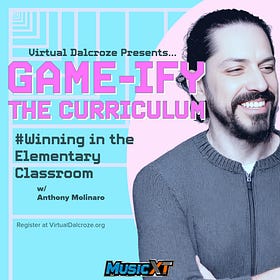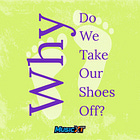In this post, I’m continuing my series “The First Three Classes” with some tips and activities for primary grades, 2nd and 3rd grade. For my international subscribers, these are students who are typically 7,8, or 9 years old. Even students that have had several years of experience with movement-based instruction need to be launched properly at the beginning of the year. This post will guide you through the first three classes to set yourself up for a great year of beautiful moments! But first…
Housekeeping:
Whether you’re a Dalcroze-4-lyfe devotee or just Dal-curious, my SHORT COURSE (brought to you by my friends at Virtual Dalcroze and Integral Steps) is for you! Many folks who subscribe to MusicXT are mixed-baggers, sprinkling in Dalcroze-inspired activities into their curriculum, while others are on a pathway to a more traditional Dalcroze approach. All are welcome to join this course GAME-IFY THE CURRICULUM.
Game-ify The Curriculum
As I’m typing this post I am looking out at the picturesque Green Lake in Northern Michigan, a slight breeze cooling off the summer evening and the sound of music wafting through the air. Interlochen Summer Arts Academy is coming to a close and you can hear the most delicious cacophony of music almost constantly here, with amazing musicians practicing i…
This series is for TEAMM Subscribers, so upgrade today and join the community of teachers interested in body-centered teaching. You’ll get access to the best archive of Dalcroze-inspired lessons for elementary teachers and support the goal of this platform, to popularize these powerful principles in mainstream music education. Also, you’ll get to attend the upcoming TEAMM Show and Tell Zoom session on August 21st at 7PM Eastern Time! In this session we’ll have presentations TEAMM All-Stars KuanTing and Linda!
For primary aged students, especially once they’ve been through my program for their Kindergarten and 1st grade years, the possibilities become significantly wider in terms of the spectrum of activities which we can explore. Simply in terms of physical coordination and development, we can experience immediate success and accuracy in gesture. If the foundation of musical movement has largely been established, the first three classes might look slightly different.
If you are just beginning your journey with movement-centered teaching, you can use many of the same strategies with your 2nd and 3rd grade classes as you would with K and 1st. Go back and read that post and incorporate many of the same strategies. They need to understand how to manage space, how to follow directions, and the difference between musical movement and other kinds of movement (sports, dance, etc.)
Part of the way that I draw this distinction is by having the students take their shoes off! If you are new to my work, or new to the Dalcroze approach, you might not understand why it is so important to me that the students take off their shoes! I have found this step to be transformational for my classes. I start the students taking their shoes of in 2nd grade (the Kindergarten logistics are just too much and I have had mixed results with my first graders). This takes a good bit of consideration and careful planning to navigate. I recommend these two posts to help you implement a shoes-off policy, and decide if it’s right for you.
Setting up procedures:
It is equally important to set up procedures with kids in this age range, but the manner in which you might go about it can offer some more challenge. I’ll start each class with a game called “The Perfect Circle.” In this game we process in, and start walking in a circle. Once the circle is going I challenge the students with the following commands:
Can we make the circle the right size? Can we avoid making the circle to big or too small?
Can we agree on a tempo for our circle? Once we agree on a tempo I might accompany it at the piano.
Listen for commands to change directions. (Use the piano or verbal commands.)
Create a command that is a “trick stop.” The command is similar to the one you use to change directions but means “don’t change.”
Create a command for “spin.”
Start to include clapping patterns and metrical gestures.
You can keep this activity going for the entire year!
Circle Time:
Once we are sitting in the circle, I might use the same name game that I’ve done in previous years. When you’ve had the students for a few years, often times they’ll remember their gesture from year to year and you can keep it consistent. There are several ways to expand the name game to create some fun opportunities. Here’s one you might try:
Take the students’ name gestures and put a few of them together in a way that creates a nice choreography. I call it a “movement composition.” The students enjoy trying them in different combinations and experimenting with the order. Now, put the students in small groups and instruct them to do the following:
Put their names in an order that makes sense.
Create a beginning and an end
Create a team name.
Then have the students present their compositions one at a time! Here’s an example of a movement composition:







